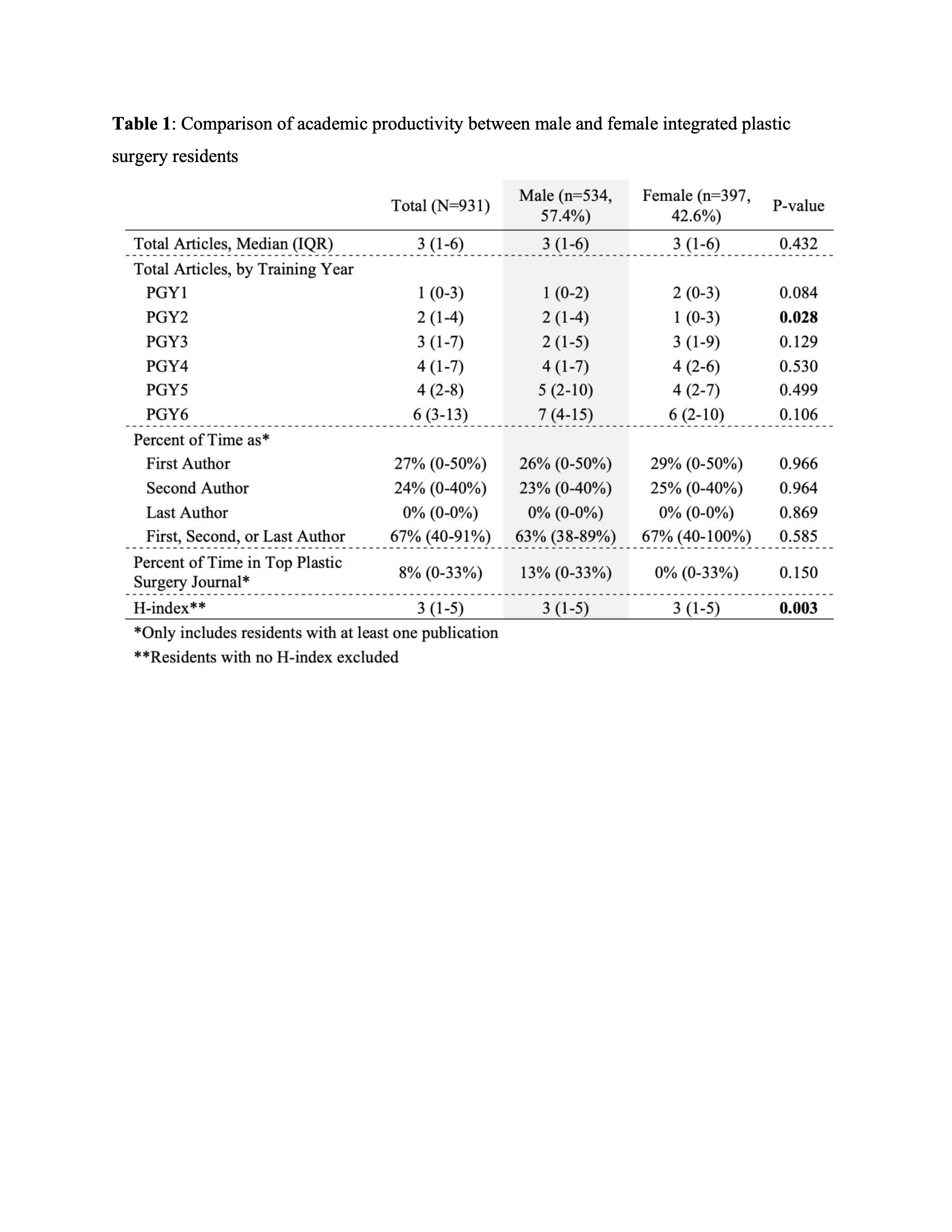Trends in Female Plastic Surgery Resident Authorship - Signs of Changing Times
Rose S. Maisner, BS, Joshua B. Cadwell, MBA, MS, Priya A. Mansukhani, BS, Alexandra Naides, BFA, Claudia Siniakowicz, BS, Parisorn Thepmankorn, BS, Lauren Zingaro, BA, Vaishali Ravikumar, BS, Haripriya S. Ayyala, MD
Division of Plastic and Reconstructive Surgery, Rutgers-New Jersey Medical School, Newark, NJ
BACKGROUND: Gender discrepancies exist in academia for leadership positions, advancement opportunities, and research. As of 2019, the male:female ratio of plastic and reconstructive surgeons is 4.8:1, but the male:female ratio of residents in integrated programs is 1.3:1, indicating rising female representation. With more balanced resident gender distributions, the authors investigated whether opportunities and achievements have equalized by comparing male and female integrated plastic surgery resident academic productivity.
METHODS: Integrated plastic surgery residency programs were compiled from the Accreditation Council for Graduate Medical Education website and ranked by reputation using Doximity. Medical schools were ranked according to US News by research. Integrated plastic surgery residents from 2019-2020 were identified via program websites and social media accounts. Works published during residency were identified through PubMed and Scopus from July 1 of intern year through August 10, 2020. Resident PGY class and medical school, and program geographic region, ranking, and medical school affiliation, were recorded. Research productivity was assessed through number of total research articles, authorship position (first, second, or last), number of articles published in plastic surgery journals with the highest impact factors (Plastic and Reconstructive Surgery, Aesthetic Surgery Journal), and H-indices. Chi-Squared and Mann-Whitney U-tests were used to compare male and female residents (?=0.05).
RESULTS: In total, 931 residents in 81 programs were identified, including 534 (57.4%) male and 397 (42.6%) female residents. There were no differences between male and female residents in terms of training year or program geography. Female residents were more likely to come from a top-50 medical school compared to males (54.7% vs. 48.1%, p=0.049). There were no differences in gender distribution of residents coming from top-20 programs or programs affiliated with a top-20 medical school. The median (IQR) number of publications in total, and for each gender, were 3 (1-6). The number of total publications by training year did not differ by gender, except the PGY2 class where males had a median (IQR) of 2 (1-4) compared to 1 (0-3) (p=0.028). Authorship position or proportion of articles published in top journals did not differ by gender. The distribution of male residents' H-indices was slightly higher than female residents' (p=0.003), but the median (IQR) were the same at 3 (1-5).
CONCLUSIONS: Currently, male and female integrated plastic surgery residents have similar levels of academic productivity, suggesting that female representation is slowly increasing along the pipeline in academia, representing a paradigm shift from previous trends of gender inequality in plastic surgery.

Back to 2021 Posters
